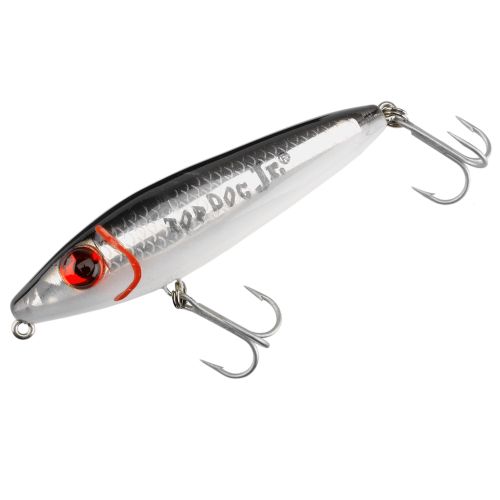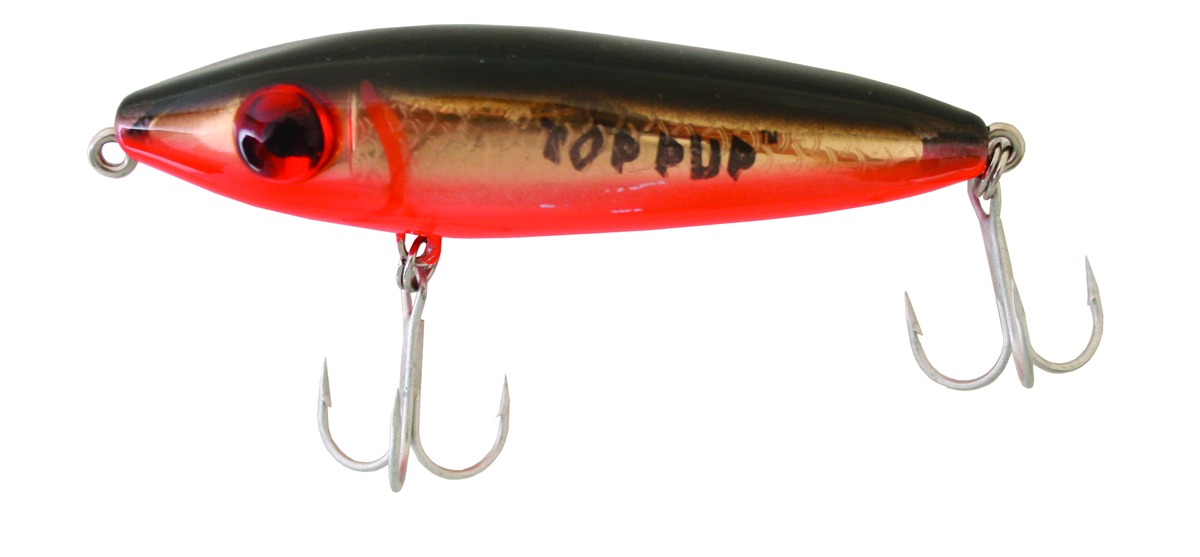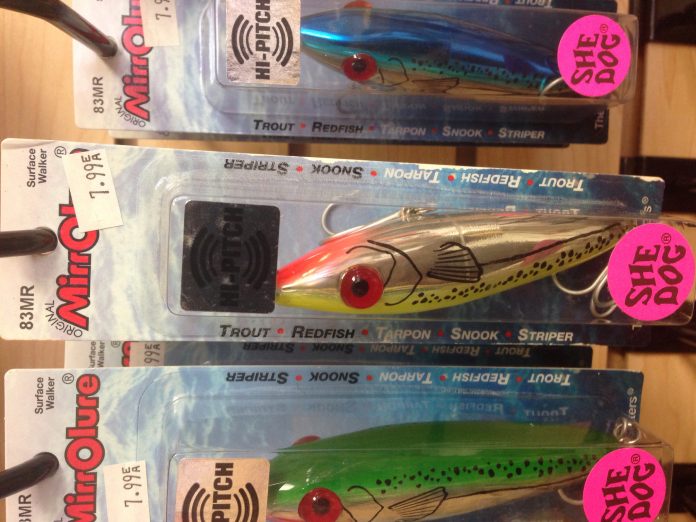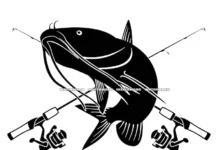November 17, 2014
By Neil Taylor, owner www.capmel.com
Neil Taylor, Strike Three Kayak Fishing
If there is one method of fishing, if I had to choose just one for the rest of my life, that I think would be the obvious choice and I will talk about the reasons why. Having fish attack, slurp or otherwise crash a topwater lure is a visual experience: A thrill that is like no other. Confession: This is probably the only situation where I may still flinch out on the water. Catch the fever! Start throwing topwater lures! I love it and (even though my mother won’t like me saying it) I am pretty good at it. Read on as I share my thoughts on it. Pretty simple, “keep it simple.” Pick baits you like and work it well. Incorporate some of the principles I will describe and you should have success.

This will work on a majority of species, minus a select few. The great fun, mastering the technique and getting regular strikes on your lures. I would have to say that the very easiest of all targets is the speckled trout. For a majority of the year you can get topwater strikes from trout. These fish will attack and attack and attack until hooked. Tempt really, really big trout: Throw them these lures. Instead of the smashing strike, the biggest trout usually “slurp” the lure.
A snook, redfish or trout is usually feeding down near the bottom. A topwater lure used in water greater than 3 feet deep is “out of the strike zone.” In fact, I think the best “maximum depth” is 2.5 feet of water. Conversely, I think you can be too shallow. I will not use a topwater in situations where the water is six inches deep. The problem with a topwater is it won’t work in certain situations. If you’re fishing a trough or something a little deeper your odds of getting a strike go way down. You can use that topwater over the middle to shallow depths on the flats but not in those other situations. Deep water? Use a jig or something else that “gets down in the strike zone.” Again, use topwater lures in topwater locations. I like seagrass bottom and 2.5 feet of water or less.
 Deep water uses for topwater: Bluefish, jacks and ladyfish are among the most likely targets around west central Florida fishing “deeper than three feet.” Bluefish are actually a very good example: Vicious teeth, throwing a regular jig on standard leader line, you stand a 70% chance that species will just cut the line and take your jighead away. If you have marauding bluefish, grab the rod with the topwater lure. Eliminate expensive errors: Hooked up to bluefish keep the rod tip up as high as you can get it. If you don’t, you will lose your lure from other bluefish hitting the leader line, mouth wide open, as they try to steal that lure out of the mouth of the hooked fish.
Deep water uses for topwater: Bluefish, jacks and ladyfish are among the most likely targets around west central Florida fishing “deeper than three feet.” Bluefish are actually a very good example: Vicious teeth, throwing a regular jig on standard leader line, you stand a 70% chance that species will just cut the line and take your jighead away. If you have marauding bluefish, grab the rod with the topwater lure. Eliminate expensive errors: Hooked up to bluefish keep the rod tip up as high as you can get it. If you don’t, you will lose your lure from other bluefish hitting the leader line, mouth wide open, as they try to steal that lure out of the mouth of the hooked fish.
You have gotten the attention of the fish. They are striking the lure. What are you planning to do? If you are on trout, just keep working the lure until the fish finds a treble hook. If the fish knocks the lure out of the water, wait for the lure to settle before you start to work it again. The line will come tight and the fish will hook itself.
For redfish, it is a little different. A redfish has a harder mouth. Redfish have more difficulty getting their mouth around the lure. An offset down mouth for bottom feeding redfish “roll” on topwater lures. And they will miss more than they connect. But, they want that meal badly enough they will continue to go after your lure until they do get a good hold of it. What should you do? My technique, which I think is better than “a hookset” is pretty simple. When a redfish has a solid hold of the lure, you can feel that in the tip of the rod. Train your brain to react when you feel that weight: Make two hard cranks of the reel handle to drive the hook point home. I have found this to work better than anything else I have ever tried. The aforementioned “hookset” is the action of yanking the rod to drive the hook point home. That will work if the lure is in its mouth. I prefer my technique because, if the fish has a broadside hold of the lure, not setting the hook, the fish will grab the lure when it floats back up. The hookset without the hooks in the fish’ mouth: The lure is going to travel so far away from that fish, it is going to peel off and your opportunity with that fish is gone.
What a drag. Losing fish from bent out hooks? Blaming the hooks? It might be time to consider something else. Maybe it is your technique and your choice in drag tension. It takes a great deal of force to bend these saltwater hooks. Back off on the hard pulling and uncrank that drag a couple of turns counter-clockwise.
 The other huge preference of topwater lures? I love my plastic jigs BUT throwing the topwater plugs, they don’t wear out and they don’t require maintenance while out on the water. My sponsor is Mirrolure. Eric Bachnik is the owner and I have been working with him for years now. I rarely ask him for more product. What I get from him: Replacement hooks. Not from being bent, from rust. Pick your choice. Mine, Mirrolure, they have people copycatting their lures repeatedly for a reason: They are strong styles that catch fish if used properly.
The other huge preference of topwater lures? I love my plastic jigs BUT throwing the topwater plugs, they don’t wear out and they don’t require maintenance while out on the water. My sponsor is Mirrolure. Eric Bachnik is the owner and I have been working with him for years now. I rarely ask him for more product. What I get from him: Replacement hooks. Not from being bent, from rust. Pick your choice. Mine, Mirrolure, they have people copycatting their lures repeatedly for a reason: They are strong styles that catch fish if used properly.
Important Lesson #1: On hooks, and if you do not get anything else out of this article, take this with you: Do yourself a favor and save yourself that impending hospital visit- crush down the barbs on every single one of your treble hooks on these lures. This will give you additional benefits as well, like being able to release fish in better shape. If you think no barbs on your hooks means you will lose fish, then you need to work on your fish fighting technique. More on this topic, take a look at BARBLESS
Important Lesson #2: The right tool for the right job. Building on lesson #1, if you do not have a good pair of pliers handy, your fingers are going to get perilously close to (rusty) hooks and sharp fish teeth. A good pair of pliers will not only keep you safely away from the fish, it provides the right leverage to back our hooks that are “stuck in a hard place” such as the hinges of fish jaws, which are solid cartilage. This can be a little tougher even with bent down barbs but pliers will make this action MUCH easier.
Less important lesson #3: A very significant myth “topwater lures only work at sunrise and sunset.” I fell for this one for a while. While I do enjoy the topwater bite during low-light conditions, topwater lures will tempt fish seasonally at varying times of the day. Don’t put the topwater away too early, especially if you are on trout.
Choosing a topwater lure: You have hundreds of options. By nature, topwater lures are noisy, visible baits. Your options are interesting. Rattles. Low pitch. Hi-pitch. My expertise is in the Mirrolure line. I have used dozens of other manufacturers’ lures over the years. Your other choices are colors. This is similar to the soft plastic bait discussion and “color” or style of lure. If it has a hook in it, I can probably catch a fish with it. That being said, I have my favorites and I believe in certain items. Keep in mind, these are my choices for the species around the Tampa Bay region.
Style recommendations: Top Pup; Top Dog Jr; Mirromullet; Mirromullet XL; and She Dog.
Other options: Top Dog; Series III; She Pup; He Dog; Popa Dog; MirrO Prop; Paul Brown Original floater; Paul Brown Floating Fat Boy
Color choices: Take your pick, again, color means less than action no matter what kind of lure you are considering. My trends and favorites are as follow: “18”, “the red headed stepchild” (officially called “11”), “21”, CFPR and BN (bone). Here is their complete color CHART. Find your own favorite and use it. I could use BN and 18 for every cast the rest of my life and know I will be happy with the results.
Technique: Nothing replaces expert instruction. I teach it on nearly a daily basis. In general, keep control. Some people do well with very erratic technique on moving their topwater lures. I teach shorter jabs and a continuous reeling motion where the angler can literally “feel” the lure at all times. Avoid the tendency to go the same speed all the time. Break your rhythm and also work in some pauses. You will see that many strikes will come after a pause. Rod tip high or low? Yes. Both work. Try different things and pay attention to what works!
Enjoy the world of topwater fishing and may you always smile the way I do when you get a big fish to rise!
Neil Taylor
Owner and guide: www.strikethreekayakfishing.com
(Cell) 727-692-6345 LivelyBaits@aol.com
Owner and site administrator: www.capmel.com
- The Neil Blog… - July 26, 2023
- The Catfish - July 26, 2023
- update - July 22, 2023











